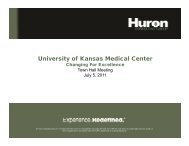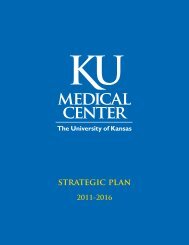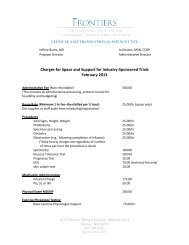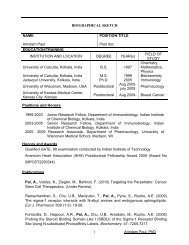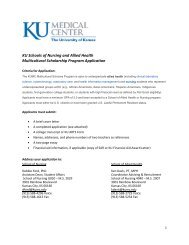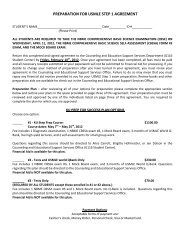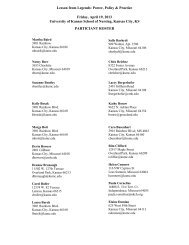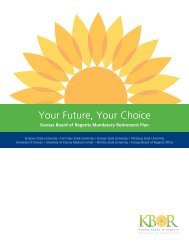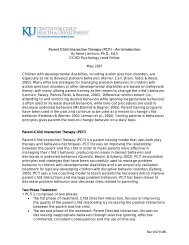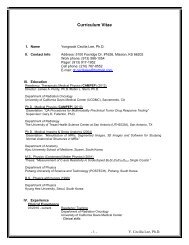Clinical Orientation Manual - University of Kansas Medical Center
Clinical Orientation Manual - University of Kansas Medical Center
Clinical Orientation Manual - University of Kansas Medical Center
You also want an ePaper? Increase the reach of your titles
YUMPU automatically turns print PDFs into web optimized ePapers that Google loves.
surgical preps, showers, etc.<br />
Dressing changes and wound care<br />
Respiratory care: Although respiratory care is generally provided by Respiratory Therapy rather than<br />
nursing, Respiratory Therapy orders that do not include medications are <strong>of</strong>ten included here, for<br />
instance, PD&C (percussion and postural drainage), TC&DB (turn cough and deep breathe),<br />
incentive spirometry, nasotracheal suctioning, etc.<br />
Notify house <strong>of</strong>ficer if: This establishes parameters in vital signs beyond which nursing will notify the<br />
patient's resident for further orders, for instance, notify HO for temp>38, systolic BP20,<br />
etc.<br />
8. Diet: NPO, regular, mechanical s<strong>of</strong>t, clear liquid, 1600 cal ADA, 2 gm sodium restriction, tube feedings,<br />
protein restricted, etc.<br />
9. Intake and output: This includes the frequency with which nursing will monitor and record I&O as well<br />
as any tubes, drains, or lines the patient might have, for instance:<br />
Record hourly I&O<br />
NG tube to low intermittent suction<br />
Foley catheter to dependent drainage<br />
Hemovac, surgical drains, chest tubes<br />
Endotracheal tubes, arterial lines, central venous lines<br />
10. Specific drugs: This includes all medications to be given on a specific schedule, for instance,<br />
antibiotics, diuretics, cardiovascular drugs, etc. Also include allergies to medications. IV<br />
orders include simply the type <strong>of</strong> IV solution and the rate at which it is to be infused, for<br />
instance, D5 1/2NS TRA 50 cc/hr. When the patient has both central and peripheral<br />
lines, these are specified separately, for example, D5 1/2NS TRA TKO via peripheral<br />
line and D5 1/2NS TRA 100 cc/hr via central line. Inpatient medication orders are<br />
written with the name <strong>of</strong> the drug, dosage, route <strong>of</strong> administration, and frequency <strong>of</strong><br />
administration specified, for instance, Digoxin 0.125 mg PO Qday.<br />
11. Symptomatic drugs: This includes all drugs to be given on a PRN basis, for instance, pain meds,<br />
laxatives, sedatives, etc.<br />
12. Extras: This includes any diagnostic procedures to be performed, for instance, EKG, chest x-ray, CT<br />
scan, sonogram, etc.<br />
13. Labs: CBC w/ diff, urinalysis, etc. These can be one-time orders for admission lab work or can be for<br />
standing orders for continuous monitoring, for example, daily INR.<br />
Discharge Orders:<br />
At KUMC, O2 is used for discharge orders. The KCVA uses a different system. You use the same order<br />
form for discharges as you do for your other orders. Discharge orders should include the following basic<br />
information. (Note: most <strong>of</strong> the discharge paperwork will now be completed on the computer, but the<br />
information provided here still holds).<br />
1. Discharge: Give location patient will be going after leaving hospital (i.e. home, nursing<br />
home). Specify what date and time.<br />
44



